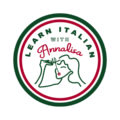How Many Calories Are in a Cappuccino? Understanding Cappuccino Nutrition
Cappuccinos are a popular espresso-based drink, but how many calories are in a cappuccino? If you’re watching your calorie intake, it’s important to understand the nutrition information for cappuccinos. In this article, we’ll explore the calorie count, fat content, and other nutrition information for cappuccinos, so you can make informed choices.
Table of Contents
Cappuccino Calories Count
The calorie count of a cappuccino can vary depending on the ingredients and serving size. On average, a standard cappuccino contains about 150-200 calories. This calorie count is relatively low compared to other espresso-based drinks and can fit into a balanced diet.
Fat Content in Cappuccinos
Cappuccinos are made with milk, which means they contain some fat. The fat content in a cappuccino can vary depending on the type of milk used. On average, a cappuccino contains about 3-5 grams of fat. This fat content is relatively low, and most of it comes from healthy unsaturated fats.
Other Nutritional Information
In addition to calories count and fat content, cappuccinos also contain other nutrients, such as protein and carbohydrates. A standard cappuccino contains about 8-12 grams of protein and 10-15 grams of carbohydrates. These nutrients provide energy and help keep you feeling full. Making cappuccinos a great choice for a mid-morning or mid-afternoon snack.
Oat Milk Cappuccino Calories
For those following a vegetarian or vegan diet, it’s important to be mindful of calorie intake, including when it comes to cappuccinos. The good news is that non-dairy milks, such as almond milk or oat milk, are lower in calories compared to regular dairy milk. This means that cappuccinos made with non-dairy milks will have fewer calories. On average, a cappuccino made with oat milk contains about 100-150 calories. Less compared to 150-200 calories for a cappuccino made with dairy milk.
In addition, using a non-dairy creamer, such as coconut cream or almond cream, can also help reduce the calorie count in a cappuccino. These creamers are lower in calories compared to regular dairy creamers. And they add a touch of sweetness without adding many additional calories.
The Calorie Effect of Adding Flavorings or Sweeteners to Your Cappuccino
Adding flavorings or sweeteners to your cappuccino can significantly increase its calorie content. For instance, a tablespoon of sugar adds around 50 calories, while a tablespoon of flavored syrup can add anywhere from 50 to 100 calories, depending on the brand and flavor. Sweetened whipped cream can add an additional 50-100 calories per serving. These additions can quickly turn your relatively low-calorie coffee drink into a high-calorie indulgence. Therefore, if you’re mindful of your calorie intake, consider using natural sweeteners like stevia, or using spices like cinnamon or nutmeg to add flavor without the extra calories.
Calorie Content: Cappuccino vs Other Popular Coffee Drinks
Just as with cappuccinos, the calorie content of other popular coffee drinks can greatly depend on the ingredients and serving size. A standard espresso shot contains only about 5 calories. However, when you add milk and sugar, the calorie count rises. For example, a latte, which is espresso mixed with steamed milk, contains around 130-170 calories for a 16-ounce serving, while a mocha, which adds chocolate to the espresso and milk mix, can have up to 360 calories for the same serving size. An Americano, which is espresso diluted with hot water, is a lower-calorie choice with only around 15 calories per serving, assuming no milk or sugar is added. Understanding the calorie content of different coffee drinks can help you make informed dietary choices that suit your personal needs and preferences.
Understanding Nutritional Differences Between Different Types of Milk
The type of milk you choose for your cappuccino can also affect its nutritional and calorie content. For instance, whole milk adds about 150 calories per cup, along with 8 grams of fat and 8 grams of protein. Skim milk, on the other hand, provides about 90 calories per cup, virtually no fat, and 8 grams of protein. Non-dairy milks, like almond or soy milk, can offer a different nutritional profile. Almond milk contains around 60 calories per cup, 2.5 grams of fat, and only 1 gram of protein, while soy milk contains about 110 calories, 4 grams of fat, and 8 grams of protein per cup. Therefore, you can adjust the nutritional content of your cappuccino by choosing the milk that best suits your dietary goals and preferences.

